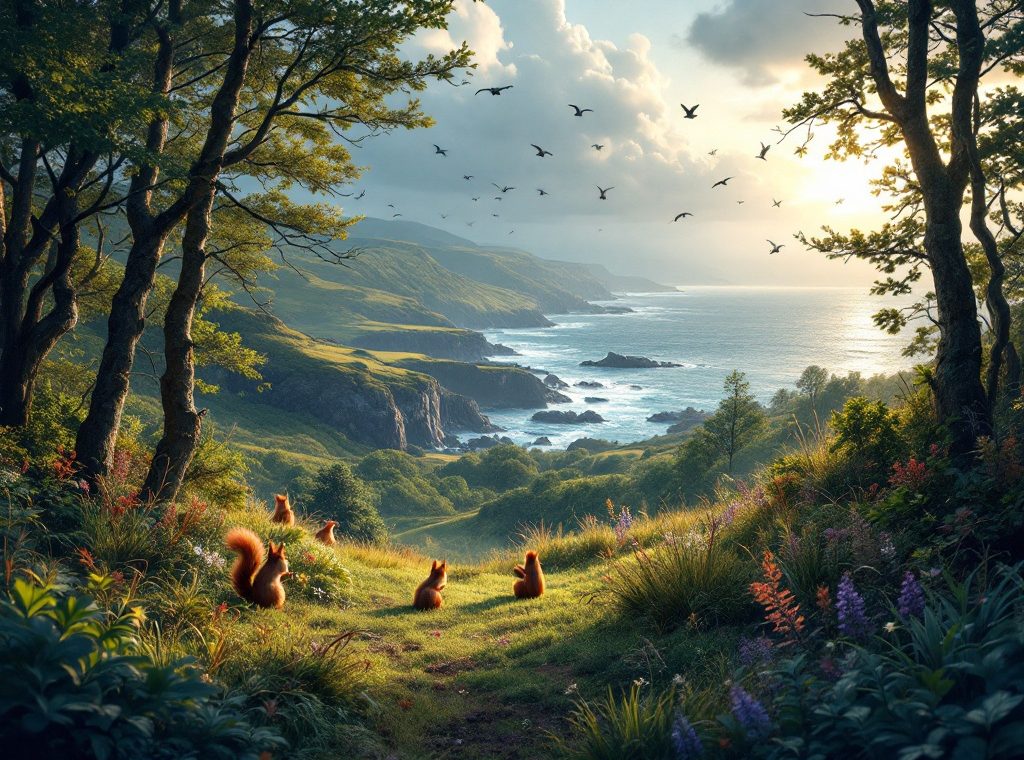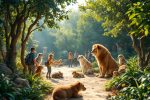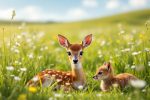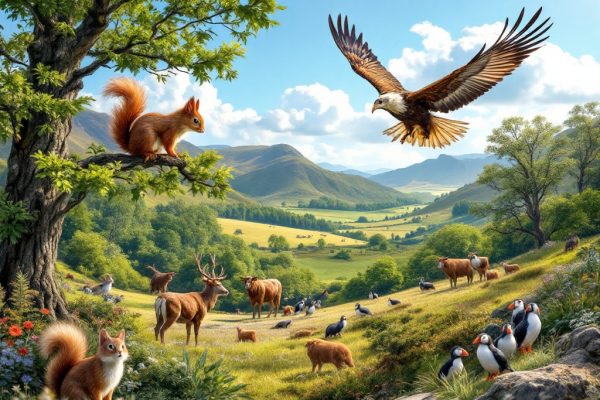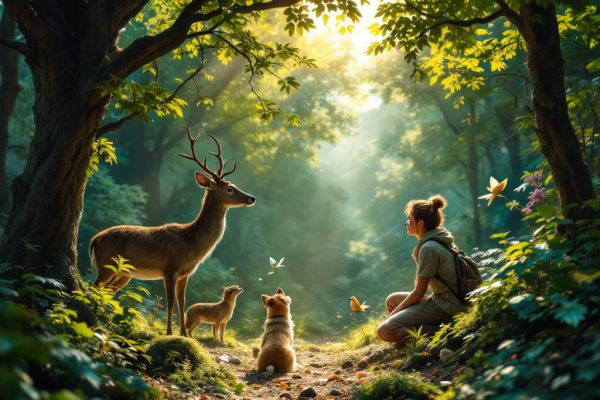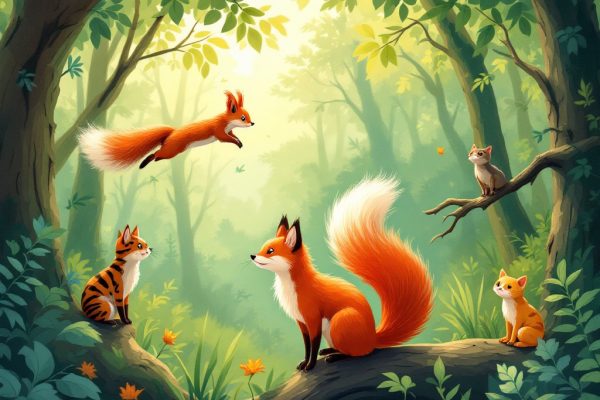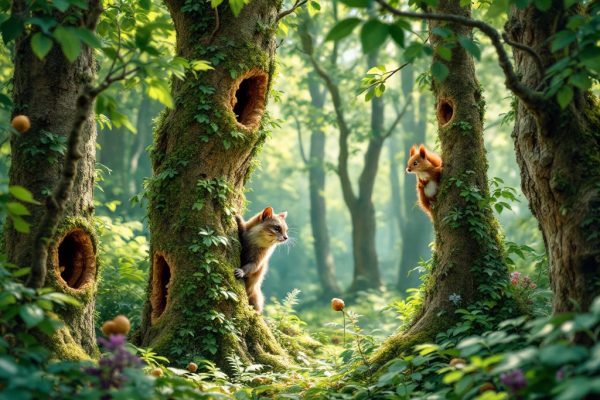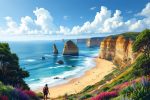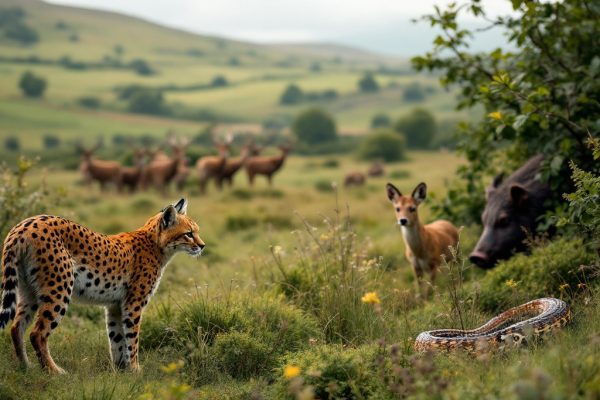How to Take Pictures of Wild Animals in Lothian?
Capture stunning wildlife photos in Lothian, Scotland! From red squirrels in tranquil forests to seabirds on dramatic coastlines, Lothian offers diverse terrains and rich wildlife. Learn how to prepare for Lothian’s unpredictable weather, choose the right telephoto lens, and utilize hides for undisturbed observation. Discover the best locations and seasons for observing mountain hares, ospreys, and pine martens. Start your Lothian wildlife photography adventure now!
Important information
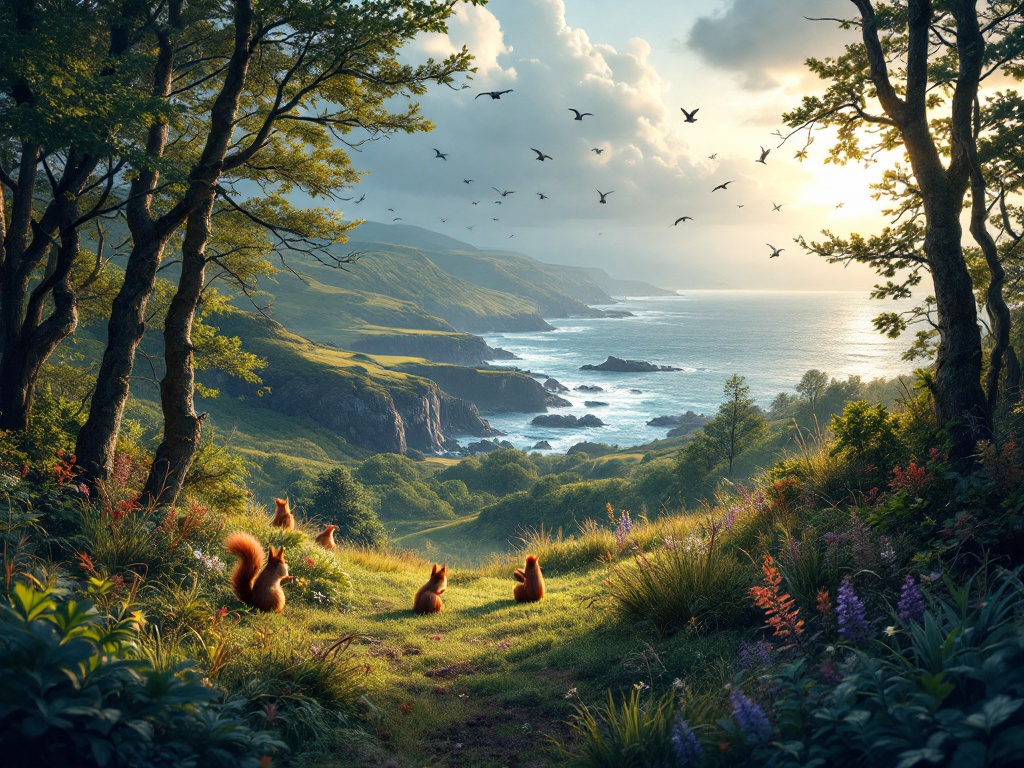
- Research Lothian’s diverse wildlife (red squirrels, pine martens, mountain hares, ospreys, seabirds) and their habitats to plan your photography trips effectively.
- Consider seasonal changes and weather conditions, packing appropriate clothing and gear, including waterproof boots and a telephoto lens.
- Respect wildlife by maintaining a safe distance, avoiding sudden movements and flash photography, and staying on marked trails.
- Familiarize yourself with Scotland’s wildlife laws (e.g., Wildlife and Countryside Act 1981) and regulations for protected species.
- Utilize wildlife hides for undisturbed observation and photography, positioning them downwind and camouflaged for minimal impact.
Introduction to Wildlife Photography in Lothian
Lothian presents exciting prospects for wildlife photographers. Its diverse terrain, ranging from striking coastlines to tranquil forests, harbors a rich variety of species. To optimize your photography, research the local wildlife and their habitats. Understanding their behavior and preferred locations is crucial. Consider the seasonal and weather influences on animal activity and visibility. Thorough preparation is essential. Pack appropriate clothing, sturdy footwear, and gear suited to Lothian’s varied landscapes and unpredictable weather. For instance, waterproof boots are indispensable during the wetter months, and a quality telephoto lens is invaluable for capturing distant subjects. Here’s a step-by-step guide to enhance your wildlife photography experience in Lothian:
Research the local wildlife. Learn about the species inhabiting Lothian, their behaviors, and their habitats. This knowledge will help you anticipate their movements and choose the best locations for observation.
Understand the impact of seasons and weather. Animal activity and visibility vary greatly depending on the time of year and weather conditions. Consider these factors when planning your trips.
Prepare your gear. Pack appropriate clothing, sturdy footwear, and essential photography equipment. Waterproof boots are crucial for navigating wet terrain, and a telephoto lens is essential for capturing distant wildlife.
Essential Gear
- Waterproof boots, essential for Lothian’s often wet terrain.
- Telephoto lens, crucial for capturing detailed shots of distant wildlife.
- Appropriate clothing, adaptable to Lothian’s varied weather conditions.
Key Preparations
- Research local wildlife, understanding their behavior and habitats.
- Consider seasonal and weather influences, impacting animal activity and visibility.
- Pack appropriate gear, ensuring comfort and preparedness for diverse conditions.
Planning Your Wildlife Photography Trip to Lothian
Planning a wildlife photography adventure in Lothian? Here’s what you need to know. Lothian offers diverse fauna, from red squirrels and pine martens to the elusive mountain hare. You might even spot soaring ospreys and various seabirds. Consider the optimal seasons and locations for the best viewing opportunities. Pack for Lothian’s changeable weather; waterproof gear and warm layers are essential. Lastly, familiarize yourself with local regulations to ensure both your safety and the animals’ well-being, allowing for respectful observation.
Explore Lothian’s diverse fauna, from red squirrels and pine martens to the elusive mountain hare. You might also spot ospreys and seabirds.
Think about the optimal seasons and locations for the best viewing opportunities.
Pack waterproof gear and warm layers for Lothian’s changeable weather.
Familiarize yourself with local regulations. This ensures both your safety and the well-being of the animals, allowing for respectful observation.
Best Seasons for Capturing Wildlife
The Lothian Highlands in winter is a wildlife photographer’s dream. Animals are easier to see against the snow, and their thick winter coats, like the mountain hare’s striking white fur, are magnificent. This camouflage, while intended to hide them, can paradoxically make them stand out against the darker landscape.
The low sun also casts a dramatic light, enhancing the beauty of the scenery and creating truly stunning photographic opportunities. Don’t forget your camera!
Weather Considerations and Clothing Tips
Pack for Lothian’s unpredictable weather with a waterproof and windproof jacket. Dressing in layers will allow you to adapt to changing temperatures. Comfortable walking shoes are essential for exploring the region.
Essential Camera Equipment for Wildlife Photography
Essential equipment for wildlife photography in Lothian includes a DSLR or mirrorless camera with interchangeable lenses. A telephoto lens, ideally 100-400mm or 150-600mm, is crucial for capturing distant animals. A sturdy tripod or monopod is invaluable for stability, especially in low light. Don’t forget extra batteries and memory cards for extended trips. A weather-sealed camera bag is essential for protecting your gear in Lothian’s unpredictable weather. Binoculars are helpful for spotting wildlife, and camouflage clothing can help you approach animals without disturbing them.
Choosing the Right Telephoto Lenses
Telephoto lenses are essential for wildlife photography, allowing photographers to maintain a safe distance crucial for observing natural animal behaviors. A popular choice is the 100-400mm lens. Some photographers prefer greater reach, for instance, a 600mm lens. A 600mm lens offers impressive magnification, bringing distant subjects closer, but at the expense of increased weight and cost. Therefore, consider key factors like weight, image stabilization, and autofocus speed when selecting a lens, as these significantly impact your shooting experience.
Utilizing Camera Traps for Unique Shots
Camera traps offer a unique way to observe elusive animals in their natural habitats. They capture photos and videos without human interference, triggered by motion or infrared sensors. This allows researchers to study wildlife undisturbed, especially shy or nocturnal species. Camera traps document behaviors like feeding, grooming, and interactions with young, providing valuable data on animal behavior and distribution. They capture unique moments impossible to obtain through traditional observation, offering a glimpse into a secret world.
Must-Have Outdoor Photography Gear
- A sturdy tripod is essential for image sharpness, especially with telephoto lenses.
- A lens cleaning kit helps maintain pristine image quality.
- A protective case safeguards your equipment from the elements, proving a wise investment.
Top Wildlife Locations in Lothian
Lothian offers a diverse range of wildlife experiences. From the Pentland Hills Regional Park with its roaming deer and soaring birds, to the East Lothian coast abundant with seabirds and marine life, there are numerous opportunities for exploration. Protected habitats thrive within Scottish Wildlife Trust reserves, while the Scottish Borders feature rich forests and wetlands teeming with various species.
Woodland Wonders
Red squirrels are plentiful in Lothian’s woodlands, especially at Vogrie and Dalkeith Country Parks. The elusive pine marten also inhabits these dense forests.
Coastal Delights
Birdwatchers are drawn to the East Lothian coastline, particularly Bass Rock, a renowned seabird colony. Here, gannets, puffins, and guillemots create a captivating spectacle. Ospreys can be seen breeding at Aberlady Local Nature Reserve.
For breathtaking wildlife photography, the Pentland Hills provide a chance to capture mountain hares in their natural habitat. The higher altitudes, covered in heather moorland, offer a stunning backdrop, especially during winter when their white coats contrast against the landscape.
Where to Find Red Squirrels and Pine Martens
Lothian offers excellent opportunities to observe red squirrels, particularly in Vogrie and Dalkeith Country Parks. While pine martens are more elusive, they can be found within the Pentland Hills Regional Park.
Photographing Seabirds and Ospreys
Lothian’s coastline offers stunning photographic opportunities during breeding season. Capture breathtaking images of seabirds and majestic ospreys.
The Best Spots for Capturing Mountain Hares
Observe mountain hares in their natural habitat within Scotland’s Pentland Hills Regional Park, particularly during winter when their white fur stands out against the snowy landscape. The Lammermuir and Moorfoot Hills also offer excellent hare viewing opportunities. Maintain a respectful distance and refrain from disturbing these animals with sudden movements or loud noises. Be considerate of their environment and enjoy your visit.
Photography Techniques for Capturing Lothian’s Wildlife
To capture stunning wildlife photos, learn about animal behavior and predict their actions. For instance, understanding a bird’s feeding habits can help you anticipate its flight path for better shots. Researching Lothian’s wildlife beforehand will greatly increase your chances of photographing natural behaviors.
Wildlife hides offer excellent vantage points for close-up observation without disturbing the animals, allowing for detailed shots. Position hides downwind to prevent animals from detecting your scent, and ensure they blend seamlessly with the environment to minimize your visual impact.
Ethical wildlife photography hinges on quiet observation. Avoid sudden movements and loud noises that could frighten animals. Respect their space by maintaining a safe distance, minimizing stress, and allowing natural behaviors to unfold.
Understanding Wildlife Behavior for Better Shots
Understanding animal behavior is key to capturing stunning wildlife photos in Lothian. Learning their habits allows you to anticipate their actions and position yourself for the perfect shot, significantly improving your timing. A deeper knowledge of mating rituals or feeding patterns, for instance, unlocks unique photographic opportunities. Researching the specific species you intend to photograph is crucial. Familiarize yourself with their behaviors, preferred habitats, and social dynamics to capture truly compelling images.
Using Wildlife Hides Effectively
Wildlife hides offer a unique opportunity to observe and photograph animals in their natural habitat without causing disturbance. These hidden vantage points increase the chances of close encounters, particularly with shy species. Some hides are specially designed structures, while others can be easily created using natural cover such as bushes or trees for effective concealment.
Practicing Quiet and Respectful Wildlife Observation
Observe wildlife quietly and respectfully, avoiding sudden movements and loud noises that can be disruptive. Maintain a safe distance, using a telephoto lens for close-ups to prevent encroaching on their territory. Understanding animal behavior and following local guidelines will ensure a positive wildlife viewing experience.
Be quiet and respectful. Avoid sudden movements and loud noises that can disrupt the animals’ natural behavior.
Maintain a safe distance. Use a telephoto lens for close-up shots to avoid encroaching on the animals’ territory.
Understand animal behavior. Learn about the animals you are observing and follow local guidelines for safe and responsible wildlife viewing.
Best Practices for Wildlife Photography in Lothian
Stay on marked trails to protect local wildlife habitats.
Avoid using flash photography, as it can disturb the animals.
Learn about Lothian’s wildlife photography regulations and get any required permits.
Leave no trace of your visit, respecting the animals and their environment.
Sticking to Designated Paths and Knowing the Law
Staying on marked trails safeguards Scotland’s delicate ecosystems and minimizes wildlife disturbances.
Responsible nature photography relies on understanding Scotland’s wildlife laws, particularly the Wildlife and Countryside Act 1981, which protects numerous species, including badgers, bats, and nesting birds. Disturbing these animals or their habitats is an offense. Designated paths in reserves like Aberlady Bay and Beecraigs Country Park are crucial for preserving these sensitive areas and Scotland’s natural beauty.
Minimizing Disturbance and Avoiding Flash
When observing wildlife, keep a safe distance and avoid using flash photography. The sudden burst of light can startle animals, disrupting their natural behaviors and potentially causing temporary blindness.

